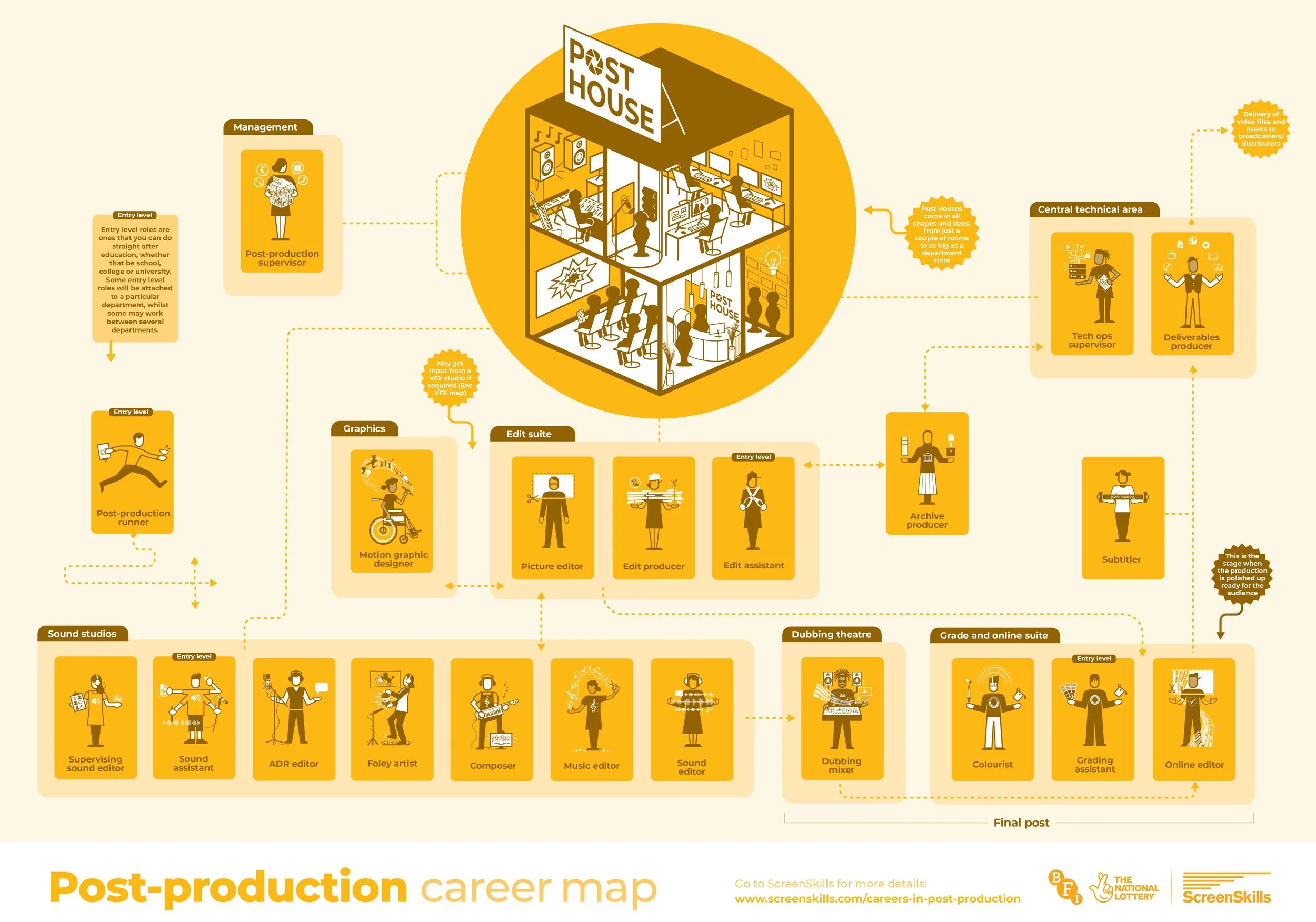POST PRODUCTION
Post-production begins with the ingestion of all the recorded material into the server of a post-production house. This gives all the different departments access to the same digitised material.
The editor starts to view, cut and
assemble the programme in an edit suite (sometimes known as the offline), often working with the director, or an edit producer if it’s a documentary. While the edit is progressing, there are many other jobs taking place in different departments. These include:
ADR: adding extra dialogue for technical reasons or to improve the storytelling
Foley: physically creating sound effects that could not be captured on location
Composition: creating the music that will accompany the film
Commentary: adding voice-over to a documentary
Often, VFX (visual effects) runs parallel to the edit. VFX is the art of combining computer-generated (CG) sequences with live-action footage to create scenes that can’t be filmed in real life. A whole sequence can be created by the VFX team before being handed to the picture editor to add into the film, or the VFX team may wait for a scene to be cut before adding the VFX.
When the edit is complete, the production is said to be picture-locked. This is an important stage because any further changes made in post after picture-lock should not alter the final duration of the film.
Final post is usually much shorter than Editing, but it’s very exciting as it’s when all the decisions about how the film will finally look and sound are made. During final post it goes into the ‘grade’, where the colourist will work with the director to create a ‘look’ for the programme. Grading is a powerful tool in feature films, but it’s also very important in documentaries, music videos and commercials where you might only have 30 seconds to make an impact, so a striking colour palette can make a lot of difference.
Source: [ScreenSkills)
For more information about careers in Post Productions click here

